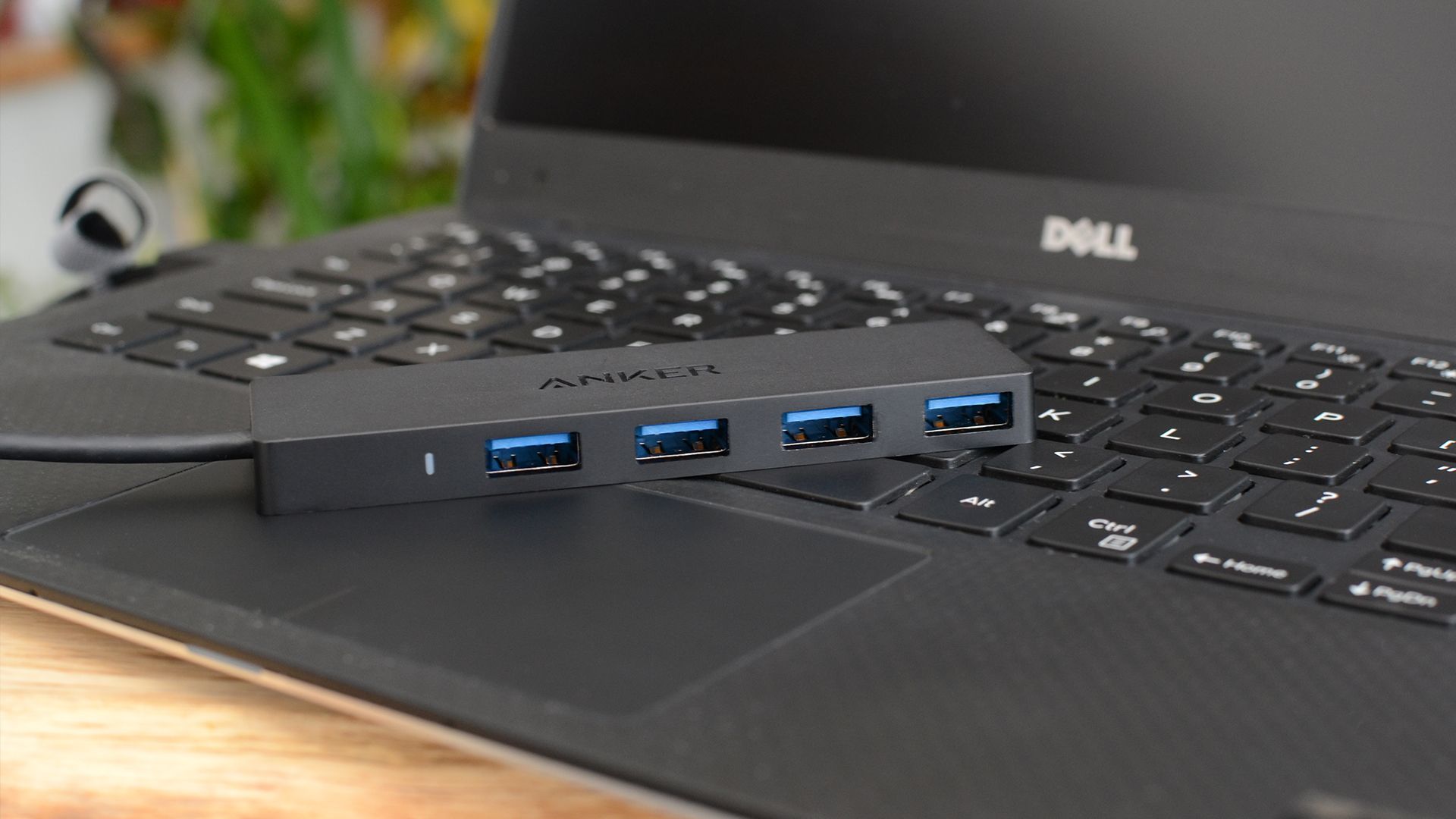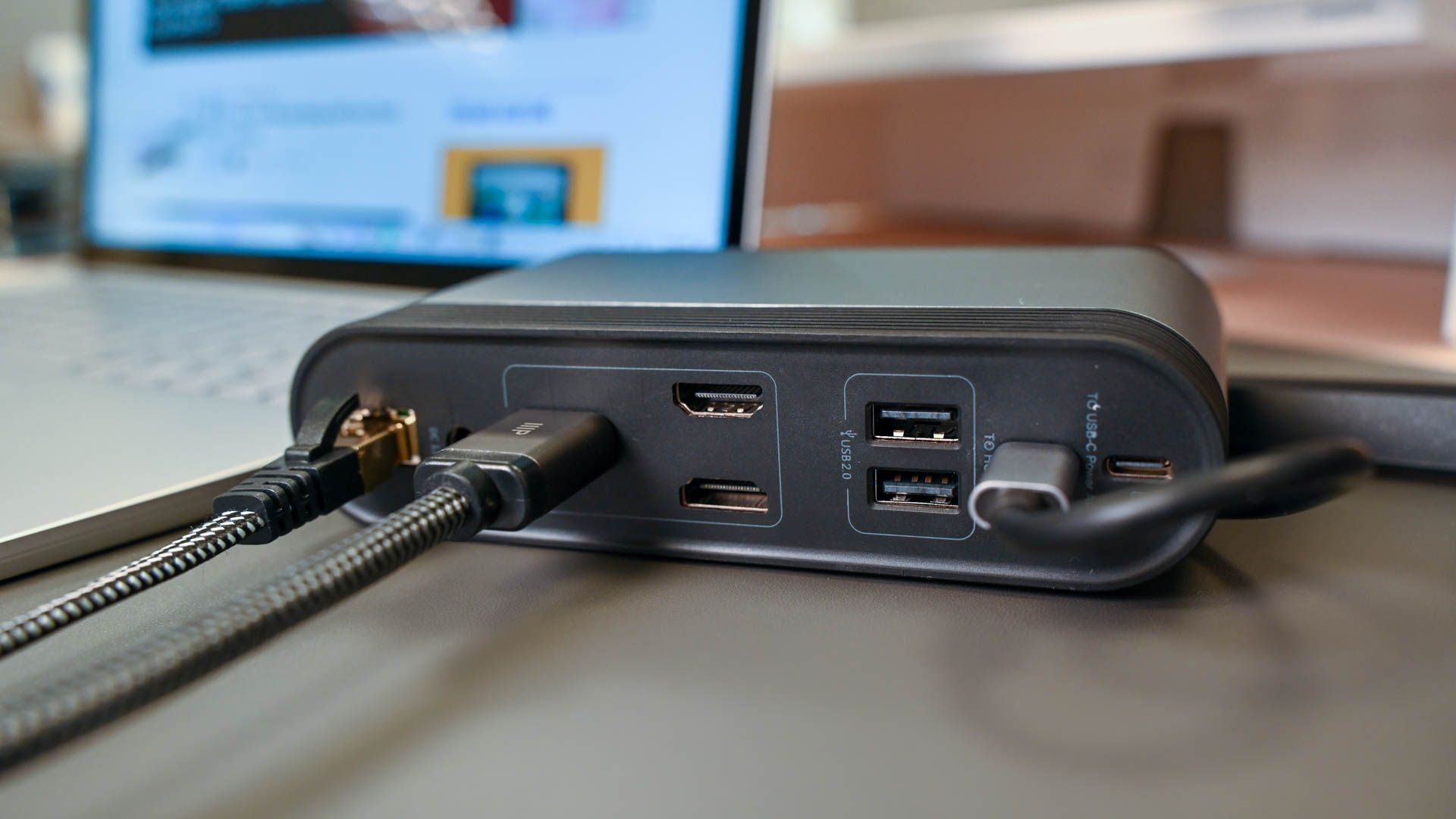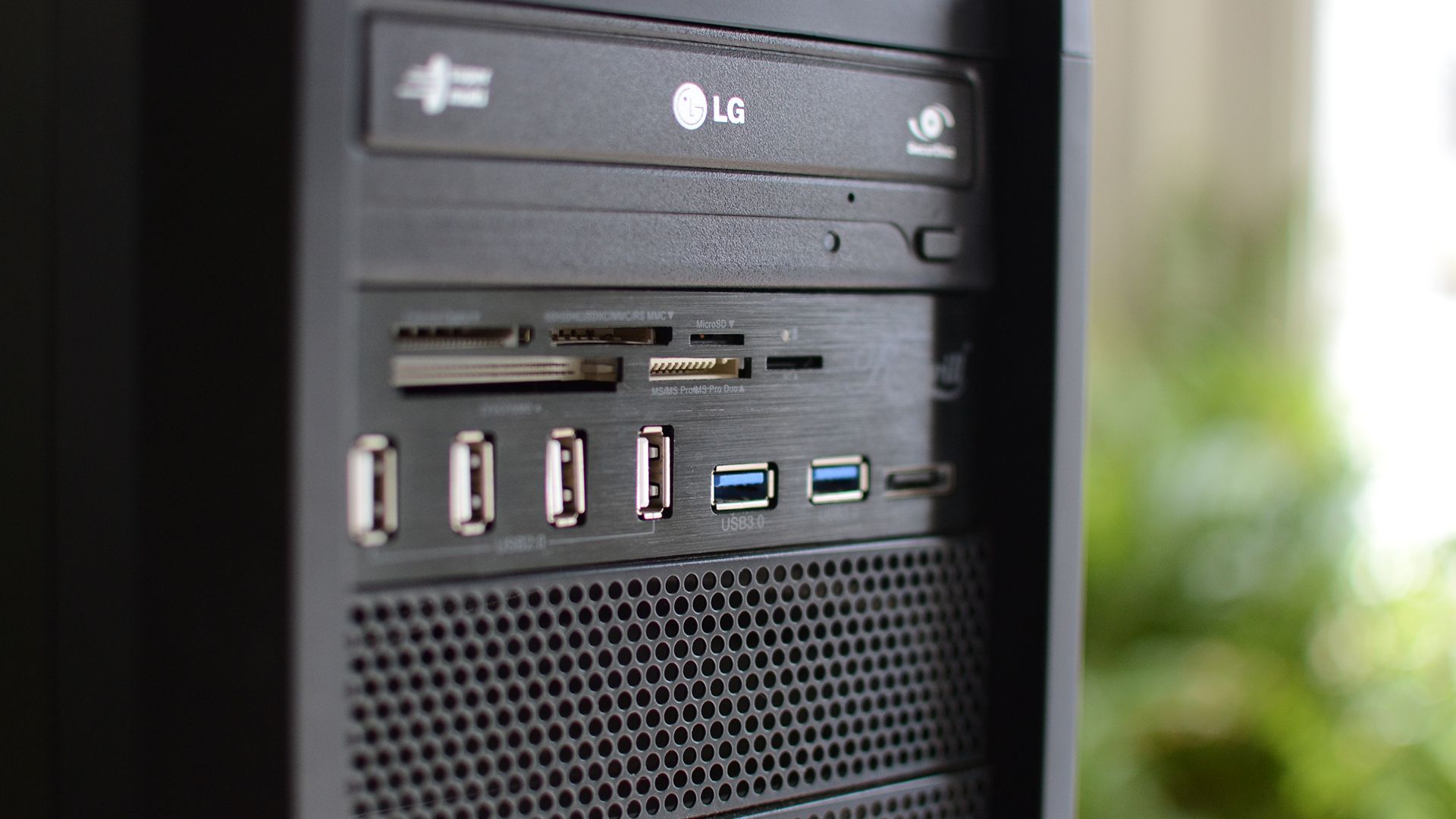Key Takeaways
You can add USB ports to a desktop or laptop with a simple USB hub. Desktop owners have the additional option of expanding USB functionality with PCI-E cards and front panel adapters.
If you're tired of swapping USB cables and searching for ports, it's time to add more USB ports to your computer. Here's how you can easily add more ports to both desktop computers and laptops.
Why Add More USB Ports to Your Computer?
Perhaps you're a digital nomad that lives your life from a razor-thin ultrabook and everything stored in the cloud. In that case, there's a good chance this isn't the article for you because a life unencumbered by cables and peripherals doesn't demand a lot of USB ports.
But for the rest of us, there are never enough USB ports to go around. Slap a keyboard, mouse, webcam, external disk drive, tether cable for your uninterruptible power supply, that really nice USB mic you bought so you don't sound like you're remote working from a bottom of a lake, and maybe a sync cable for your Kindle or other device, and suddenly you've met or exceeded the number of available ports on your PC.
And if you have a laptop? Well, forget it. You better pick and choose what you want to use at that moment because most laptops come with a couple of USB ports, at best, these days.
Fortunately, it's really easy to add ports to desktop PCs and laptops. Depending on your needs, it can be as simple as plugging something in or slightly more complex, like opening up your PC case to add expansion cards and accessories. Let's look at the options now.
How to Add More USB Ports to Your Computer
There are four ways to add USB ports to your desktop or laptop computer. We've organized them here in order of complexity, with the fastest and easiest method at the top. Here's a quick summary to help you jump to the right spot.
- Basic USB Hub: Works whether you have a desktop or laptop computer. Limits you to the data transfer rate of the single port the hub is connected to. About as plug-and-play as it gets.
- Laptop Dock/USB-C Hub: Optimized for laptops to take advantage of the USB-C ports' data and power capacity. Adds additional USB ports and support for Ethernet, displays, and other peripherals.
- USB Expansion Cards: You need an available PCI-E slot and a willingness to crack open your computer case. But when you're done, it's like your motherboard magically has extra USB ports.
- USB Front Panel: You need an empty 3.5" or 5.25" bay in the front of your computer and an appropriate motherboard connection point or expansion card. Allows you to add front panel USB ports to a computer without them.
We'd encourage you to read through the entire list below to see the pros and cons of each method before opting for just a basic USB hub. Adding a USB expansion card to your desktop is a little more hassle, but you may end up much happier with the solution over time.
Add a USB Hub: Easy Expansion for Everyone
The absolute simplest way to add more USB ports to your computer, regardless of whether it's a desktop PC or a laptop, is to use a USB hub. Adding a USB hub is analogous to adding a power strip to an outlet.
If your issue is that you're a few USB ports short and you have a lot of undemanding USB peripherals, a simple hub can absolutely get the job done. What do we mean by undemanding? USB peripherals like mice, keyboards, a UPS tether, or small items like the Stream Deck microdisplay and button interface, hardly consume any power and use minimal data.
You can plug in a small USB hub to one of your existing ports and offload 3-4 low-demand peripherals without a problem. Something like this highly-rated Anker 4-port USB 3.0 hub will fit the needs of most people just looking for a few extra ports.
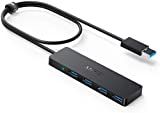
Anker 4-Port USB 3.0 Hub
This compact USB 3.0 hub is perfect for adding a few extra ports to desktop computers and laptops alike.
The biggest shortcoming of the Anker model and similar compact data-only USB 3.0 hubs is the limited power. The power output of a single USB 3.0 port is shared across all the ports. While that offers more than enough power for basic peripherals, you won't want to power external hard drives off of it, and any attached device will charge very slowly compared to using a dedicated charger.
To remedy that problem, you can opt for a USB 3.0 hub with an external power supply like this TP-Link model that includes 7 data ports and 2 dedicated charging ports.
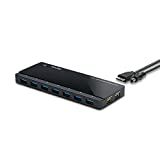
TP-Link Powered USB Hub 3.0
If you need more ports than a basic hub offers and you want full power across all the ports, including two charging ports for convenience, it's tough for beat this 7+2 design from TP-Link.
While the aforementioned Anker option is great for those moments where you just need a few extra ports for that last peripheral or you want your mouse and keyboard to share the same USB port to economize space, an externally-powered port is a lot more versatile.
It's also a great option to part on your desk if you want easily accessible USB ports without the hassle of adding a PCI-E card, as some of the later options in this article require.
Use a Laptop Dock: Perfect for Work from Home Setups
Let's take a moment to talk about laptops and USB hubs. When you're dealing with a shortage of USB ports on a desktop PC, that's usually the extent of your problem: you just need more USB ports. Maybe you want more on the back of your PC. Maybe you want some on the front panel of your PC. But other port needs, like an Ethernet port or an HDMI port for your monitor, are already taken care of by the basic design of the desktop PC.
While you can stick to just using one of the USB hubs in the last section, you might want to consider the laptop dock approach to selecting a USB hub for your laptop.
Historically, laptop docks were huge clunky affairs where you mated your entire laptop into a cradle or mount with connections for all the various ports on your laptop. The docks were unwieldy, and you had to buy a specific dock for your particular laptop model. The advent of high-speed USB connections, and USB-C especially, have made the clunky laptop-specific docks a thing of the past.
Now you can plug a single cable into your laptop and not just gain some extra USB ports but also easily turn your laptop into a desktop workstation with a connected display, stand-alone keyboard and mouse, and other niceties.
You'll pay a little bit more for a USB 3.0 or USB-C hub that doubles as a docking station, but it's a huge quality-of-life improvement that will help stop your laptop from murdering your back when logging long work-from-home hours.
On the compact side, you can pick up this 8-in-1 Anker USB-C hub. It's great for small at-home setups and tiny enough to take it on the road easily.
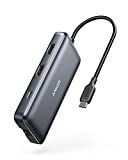
Anker USB C Hub, PowerExpand 8-in-1 USB C Adapter
If you want to expand the capacity of your laptop to include more ports as well as display and Ethernet connectivity, this Anker USB C hub is a huge step up from a basic USB hub.
On the bulkier side, for those situations where you want to drop your laptop in and use it as the heart of a triple-screen work-from-home setup, you can jump from compact USB hub territory into dedicated docking station territory with something like this Anker 575 USB-C Docking Station.
It's more expensive and not for everyone, but if frustrations with setting up your laptop to work from home are what led you to read this article about extra USB ports, we assure you that a good laptop dock is a lifesaver and a work-from-home necessity if you crave a traditional desk setup.
Get a USB Expansion Card for Your Desktop PC
This solution and the next are PC-only as there is no way to crack open a laptop and add in additional USB cards or interfaces. But if you're frustrated with the number of USB ports on your PC and willing to open the case, both these solutions are very easy (insofar as PC modifications and repairs go).
The best part about these methods is that even if you have an older PC that doesn't have USB-C ports, you can add them in without replacing the entire motherboard or upgrading to a brand-new computer.
All you need is an available PCI-E slot in your computer. Given that many of the reasons people used PCI-E slots in the past have now been integrated into motherboards, there's a good chance you have at least one free if you haven't already filled them with other PCI-E upgrades like adding in a Wi-Fi adapter card.
We detail how to add a USB-C expansion card to your PC in this tutorial, but if you're comfortable with adding PCI-E cards already you can just grab a card, like this PCI-E 7 port (2 USB-C, 5 USB-A) card install it.
You'll spend a few minutes installing it and maybe a few minutes installing the drivers if they don't automatically install on their own, but after that, you'll have a bunch of full-power high-speed USB ports on your computer without anything hanging off the back of your PC.
Install a USB Front Panel for Your Desktop PC
Adding extra USB ports to the back of your PC is a welcome upgrade, to be sure, but what a lot of people crave is easy-to-access USB ports on the front of their PC.
While you could achieve this by using double-sided tape to affix a USB hub to the top or side of your PC case, you might prefer a more integrated look.
Your options are to either upgrade your PC case to a new model that has front-panel USB ports or to add a front-panel adapter. The front panel trick is one we used in both our guide to adding USB 3.0 to your PC as well as our guide to adding USB-C to your PC.
You can find front panel adapters sized for 5.25" bays, like this model with 2 USB 2.0 ports, 2 USB 3.0 ports, and a USB-C port. You can also find 3.5" models, like this one with 2 USB 3.0 ports, a USB-C port, and an integrated SD and microSD card reader. (Don't worry if you find a 3.5" model you like better, but you don't have a 3.5" slot on your case, you can use a 3.5" to 5.25" bay adapter.)
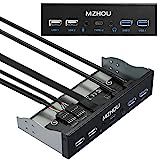
5.25 inch USB Adapter for Desktop PCs
Love your old PC case but don't love the lack of modern ports? Add a front panel adapter to bring your old case into the USB-C age.
Whatever adapter you use, be sure to pay attention to the motherboard port connections it requires. Typically you'll need a USB 3.0 and/or USB 3.2 header for the high-speed ports, a USB 2.0 header for the regular USB ports, as well as connections for any additional ports on the front panel upgrade (for the headphone jack, eSATA connection, or such).
If you don't have the appropriate ports on your motherboard, you will need to add them with a USB header PCI-E expansion card. And, even if you do have the appropriate ports, you may want to use an expansion card anyway if you have existing front panel or top-side ports you want to keep using---otherwise you'll have to unplug the existing cables for your old case ports to reuse them for the new front panel adapter. If you use the existing motherboard connections and a USB header expansion card, you can keep all your ports active.
But whatever type of computer you're trying to add more USB ports to, be it a MacBook or a Windows PC, the tips and tricks in this article will help you get all the USB ports you need to connect your USB peripherals.

